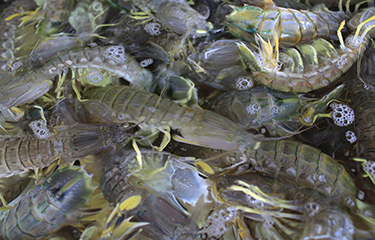Chinese shrimp imports may surpass 1 million metric tons (MT) this year, defying global purchasing trends and achieving growth that no other market has gotten close to reaching in 2023, according to Shrimp Insights Founder Willem van der Pijl.
Between the second half of 2022 and June of this year, China imported around 1 million MT of shrimp, split nearly evenly through every six months. This statistic, combined with the fact that the country’s import volume only contracted 3 percent year over year in July, has led van der Pijl to conclude that China “may, for the first time, surpass 1 million MT of imported shrimp in 2023,” he wrote in a blog post.
China’s shrimp imports totaled USD 2.8 billion (EUR 2.6 billion) by value in the first six months of 2023, up 30 percent from the same period last year. This was partly due to continually plummeting global shrimp prices, of which “it’s still unclear whether the bottom has been reached,” van der Pijl said.
In recent years, India has been steadily increasing its shrimp exports to China, but imports from India in the first half of 2023 appeared to slightly lag behind those of the same period in 2022.
Ecuador has also played a pivotal role in driving China's shrimp import growth; in 2022, Ecuador’s shrimp shipments to China approached the 600,000 MT mark. If the trend continues, Ecuador’s 2023 exports to China could potentially surge to 900,000 MT.
Argentina exported as much shrimp to China in the first half of this year as it did in all of 2022. Van der Pijl projects the country may return this year to its 2019 to 2020 export volumes to China, which hovered between 25,000 and 35,000 MT. If it reaches those marks, it would become China’s third-largest shrimp supplier behind Ecuador and India, respectively.
This all comes at a time when the global shrimp industry is facing a troubling combination of falling prices and reduced demand, exacerbated by escalating feed and production expenses, making the steadiness in Chinese demand all the more important to the sector, according Rabobank Senior Global Specialist of Seafood Gorjan Nikolik said the combination of weak demand, higher costs, and a supply glut are creating a crisis for the industry that may worsen in the latter half of 2023, even if Chinese demand remains stable.
Meanwhile, sales into other key shrimp markets, including the U.S., the E.U., and Japan, have declined in the first six months of 2023. U.S. imports have experienced the most significant drop of all major shrimp markets, though sales grew in July ...
Photo courtesy of Lewis Tse/Shutterstock








